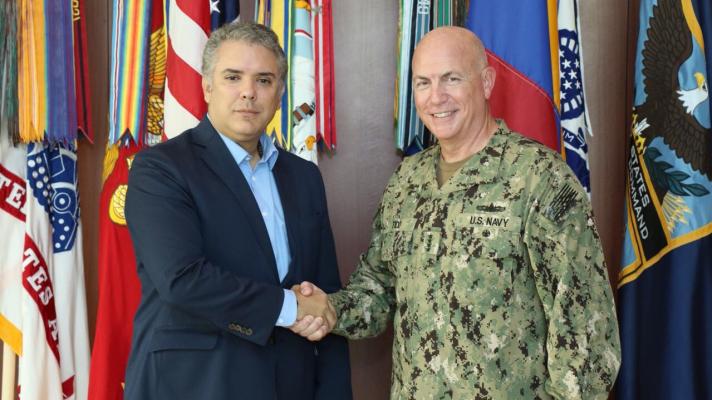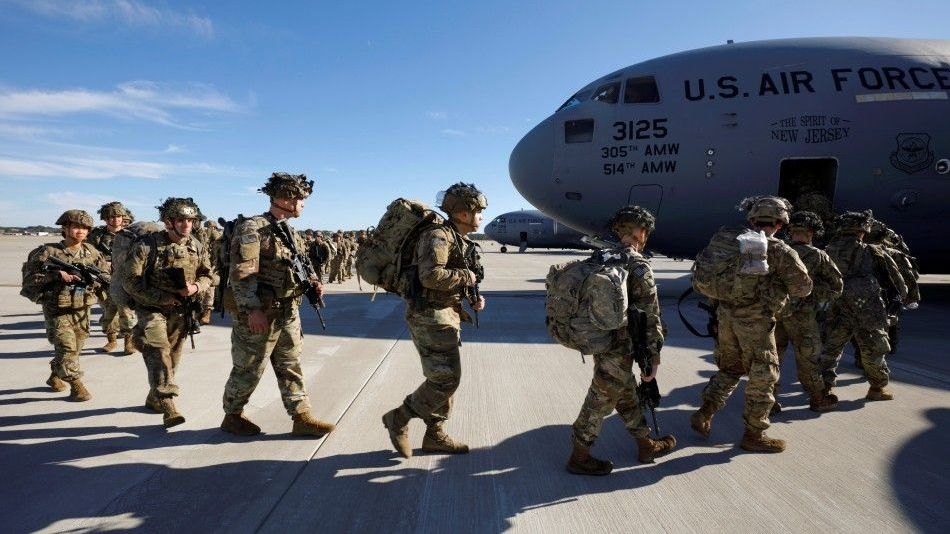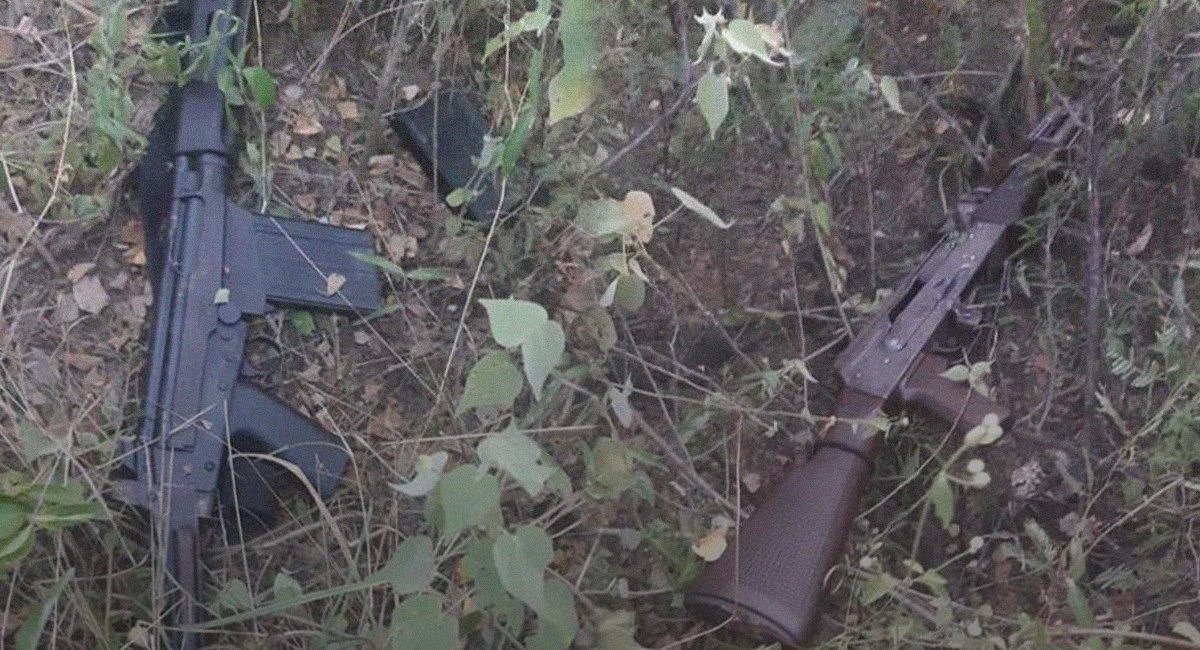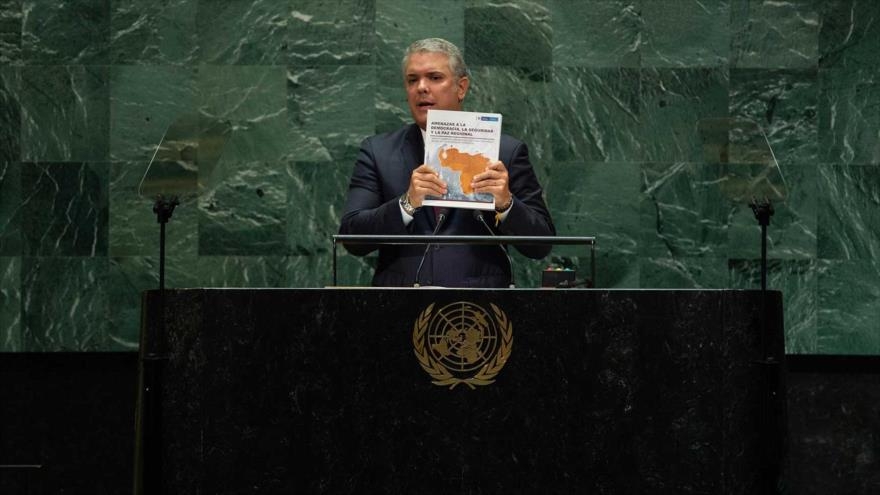Colombia’s role in the already permanent regime change operation against Venezuela is broad and eloquent. Some recent events in that country may be worthy of attention and analysis, however, all this would require a series of further questions to help clarify what is behind these events and where they are headed.
Perhaps the most curious event is the visit of the head of the Central Intelligence Agency (CIA) of the United States, William J. Burns, to that country to participate in a “sensitive” security mission, as part of the cooperation between both countries. The visit follows a telephone conversation between U.S. President Joe Biden and his Colombian counterpart Iván Duque.
Colombia’s ambassador in Washington, Francisco Santos, declined to give further details about Burns’ visit to Bogota. When questioned about the mission, Santos said:
I prefer not to tell you, it is a delicate mission, an important intelligence mission that we managed to coordinate.
He added that the visit of the US official to Colombia was made by a contact, after having had three meetings with the agency and that in those meetings they have told them where they are going and what is happening, so they consider his visit as “very important”.
Smoke around a car bomb?
Another disturbing event is the alleged attack on a base used by the 30th Brigade of the Colombian Army in Cúcuta, 10 km from the Venezuelan border. Without evidence, the Colombian Minister of Defense, Diego Molano, blamed the event on the guerrillas of the National Liberation Army (ELN) and the dissidents of the Revolutionary Armed Forces of Colombia (FARC) saying: “We reject and repudiate this vile and terrorist act that was intended to attack the soldiers of Colombia”, adding that “Thirty-six people were wounded. Three of them seriously”.
According to official versions, two men drove a white Toyota van to the base after posing as officers and subsequently there were two explosions that, in addition to causing injuries, affected the infrastructure of the military base. Videos on social networks showed what appeared to be U.S. military personnel at the base after the attack.
According to opinions of ex-officials and journalists there are elements of the version that do not match, some even affirmed that the Army was carrying military explosives of the pendrite type (which does not need a detonator) that were activated.
They also wonder why the irregular groups did not act on other occasions but in the midst of a two-month long day of protests and national strike in which the Duque government has unleashed a repressive wave. The result has been 327 missing persons and 83 homicides, 44 of these with presumed responsibility of the security forces.
Others, such as journalist Gonzalo Guillén, have expressed surprise about details, such as the fact that the car-bomb did not leave any mark on the post next to or on the car behind and that the tires were left intact.
Miracle! The car bomb in Cúcuta did not leave any marks on the pole next to it or on the car behind it.
Bless God! pic.twitter.com/FzGnnF2ya1
– Gonzalo Guillén (@HELIODOPTERO) June 16, 2021
¡Milagro! El carro-bomba de Cúcuta no dejó ninguna marca en el poste de al lado ni en el carro de atrás.
¡Bendito sea dios! pic.twitter.com/FzGnnF2ya1— Gonzalo Guillén (@HELIODOPTERO) June 16, 2021
Hence the suspicion has spread that it was a smokescreen to distract from some controversial decisions such as the sinking of the “Zero Tuition” project that would give free education to 140 thousand young Colombians annually, the traditional parties also sank the law that would ban fracking; the basic income project for those most affected by the pandemic and at the same time increased the budget to the Procuraduría, a control entity criticized for the lack of transparency in its contract policy and for political persecution.
According to the blog La Tabla, the ELN assured in a brief communiqué that they had nothing to do with the attack, and furthermore, after the attack, the 11 agents of the SFAB Mission (1st Assistance Brigade and Security Force attached to the Southern Command) of the US Army who remained at the military base were unharmed.
This is a military command that has been advising on-site in the fight against drug trafficking since June 2020. It is comprised of specialists in operations analysis, tactical form and strategy against “destabilizing threats or factors” and comes from the Military Advisors Training Academy at Fort Benning, Georgia. Such a presence has been rejected by the Venezuelan government and different social movements in the continent.
Duque offered a reward of 500 million pesos (133 thousand dollars) for those who provide information on the perpetrators of the “attack” and announced military assistance for the patrolling of Cúcuta, traveled to that city the following night, made a statement on the possible perpetrators of the action and gave an account of the road map to catch those responsible.
The Colombian head of state also announced the creation of a special criminal group, supported by specialized personnel from the Federal Bureau of Investigation (FBI) of the United States, to carry out the investigations. He also announced the creation of a “wall plan” on the border to prevent the possible perpetrators of the attack from fleeing to Venezuela to hide.
Ten days later, attack on the presidential helicopter
Much more disturbing has been the alleged attack on President Iván Duque himself. Last Friday, June 25, the Black Hawk helicopter in which he was traveling was attacked when the president was fulfilling a commitment in the municipality of Sardinata, border zone of Catatumbo in the department of Norte de Santander.
Official sources informed that he was traveling with the ministers of the Interior, Daniel Palacios, of Defense, Diego Molano, and the governor of Norte de Santander, Silvano Serrano, who were attending an event called “Peace with Legality, Sustainable Catatumbo chapter”.
According to reports, the helicopter in question was reportedly hit by six bullets and all crew members completed the trip safely. Minutes after the incident, through a video posted on social networks, the Colombian president described the incident as a “cowardly attack”, stated that he instructed the entire security team to go after those who shot at the aircraft and said that “both the aerial device and the capacity of the aircraft prevented a lethal event from occurring”.
Duque added that “They do not intimidate us with acts of violence or terrorism”, while the Colombian Presidency published a video of the attacked aircraft.
The helicopter in which Colombian President Iván Duque was traveling was attacked this Friday with several shots while landing at the Cúcuta airport, the government denounced. pic.twitter.com/E5sp44rhsK
– RT en Español (@ActualidadRT) June 26, 2021
El helicóptero en el que viajaba el presidente colombiano Iván Duque fue atacado este viernes de varios disparos cuando aterrizaba en el aeropuerto de Cúcuta, denunció el Gobierno. pic.twitter.com/E5sp44rhsK
— RT en Español (@ActualidadRT) June 26, 2021
A few hours after the events, the Colombian authorities published the sketch of two alleged perpetrators of the aggression prepared by the Attorney General’s Office and different police agencies.
The Minister of Defense, Diego Molano, affirmed that both persons fired AK-47 and FAL 7.62 rifles which were found near the area where the attack took place and reported the following day, considered that this was not an isolated attack and that “it is not disjointed from what has been happening throughout the last two months”, since “the attacks to governors’ and mayors’ offices reach their peak with this attack to the president”.
Molano said that “information has been received of a possible criminal drug trafficking alliance between the urban front of the ELN and the dissidences of FARC residual armed group 33”. Local media announced the realization of 102 genetic, ballistic and dactyloscopic criminal studies, 45 judicial interviews and the analysis of 22 cameras with 160 hours of recording by the authorities.
The director of the National Police, General Jorge Luis Vargas, assured from Cúcuta the finding of the aforementioned weapons and affirmed that “of the 20 percussion pods found in the place of the facts, 14 belong to the FAL rifle preliminarily and 6 of them to the AK-47 rifle, according to the preliminary experts of the Police and the Attorney General’s Office”. He added that one of the weapons found has marks of the Venezuelan Armed Forces (sic) and that the shots were fired from a sector adjacent to the air terminal, a neighborhood bearing the same name of the airport: Camilo Daza.
Some analysts have expressed doubts regarding some criminal data provided by the authorities, such as the use of a FAL rifle by guerrilla groups, this type of weaponry was disincorporated by President Hugo Chávez in 2005 and it is well known the guerrillas’ preference for lighter weaponry, including the AK-47.
Others have satirized the fact that none of the shots shown hit the lower part of the fuselage of the aircraft but the upper part.
More analysts have explained the need of the pro-Uribe government to unleash more aggression and instability against Venezuela by making the public believe that Venezuela has attacked them, typical of a false flag operation.
Pointing to Venezuela as a distraction?
Although so far the Casa de Nariño has not accused the Venezuelan government of both incidents, the reflex action of the Duque administration is already known, which always involves pointing the finger at Caracas, without proof, in every negative event that occurs. The seriousness of the alleged recent events has not prevented the president from continuing to participate in public events, and the logical withdrawal and protection required by events of such nature has not been implemented.
The one who did target his own country, without evidence, was the former deputy Juan Guaidó, who wrote in his Twitter account that “the rise of attacks in our brother country is related to access to resources and protection of the narco-guerrillas from the dictatorship in Venezuela”.
There are many questions regarding the motivation of such statement, the most obvious one is whether the spokesman of the pro-US anti-Chavism seeks notoriety after both Biden and Duque have continuously ignored him in the last months. To the point that he was not mentioned in any of the two communiqués derived from the call between the two presidents.
As it was known, last Monday, June 28, Biden offered Duque “his support to face terrorist actions” and, as communicated by the Colombian presidency, “…expressed his concern for the situation in Venezuela and its regional impact, and stressed the importance of seeking an international consensus for free and fair elections”. He also “recognized Colombia’s effort in offering Temporary Protection Status for Venezuelan migrants who have had to leave due to the situation in their country.”
Although Guaidó has reached the end, both in Washington and in Bogota there seems to be a temptation to involve Venezuela, and something is yet to happen. For his part, the former president and operator of the global right, Andres Pastrana, said he is clear that the reasons for the strike in Colombia are not in his country but in the interference of “castrochavismo”.
The conservative politician has stated that there is interference of President Nicolás Maduro in the violence of the protests in Colombia due to the fact that he said in 2019 that “the Bolivarian breeze would arrive in Colombia” and that same year protests took place. He stated at the beginning of last June:
This is a criminal scaffolding that seeks to set Colombia on fire. The enemy of Colombia is not the trade unionists or the students, the enemy of Colombia is Venezuela and its name is Nicolás Maduro, Diosdado Cabello, all that narco-dictatorship that is in Venezuela.
He has provided as evidence that the first vice-president of the United Socialist Party of Venezuela (PSUV), Diosdado Cabello, said that if Colombia messed with Venezuela, they would make war on their territory. He added that Bolivarianism “wants to take Colombia because it is the Jewel in the Crown”.
The Colombian vice-president and foreign minister, backing statements without evidence from the then outgoing president of Ecuador, Lenin Moreno, tweeted:
We always said that Maduro’s narco-dictatorship has not only generated the greatest humanitarian tragedy for the Venezuelan people, but also intends to export its model to Colombia through its allies and cronies of always. They will not succeed. Colombia is great!!! pic.twitter.com/T183O7r1Mh
– Marta Lucía Ramírez (@mluciaramirez) May 6, 2021
Siempre dijimos que la narcodictadura de Maduro no solo ha generado la más grande tragedia humanitaria para el pueblo venezolano, sino que además pretende exportar su modelo a Colombia a través de sus aliados y amigotes de siempre. No lo lograrán. Colombia es grande!! pic.twitter.com/T183O7r1Mh
— Marta Lucía Ramírez (@mluciaramirez) May 6, 2021
In September 2019, Duque himself delivered a report to the Secretary General of the United Nations (UN), Antonio Guterres, with photos and information about the alleged presence of several ELN members in Venezuela and also the alleged protection and support of the Bolivarian Government to these guerrillas.
Subsequently, the local newspaper El Colombiano published a report demonstrating how one of the photos presented by the Colombian president as a part of the “ELN penetration in rural schools in the state of Táchira (in Venezuela) (…) in April 2018”, did not correspond neither to that place nor to the date shown. The aforementioned photo was taken three years earlier, in 2015, in the department of Cauca, southwestern Colombia.
Colombia as an imperial outpost and Venezuela on permanent alert
On the afternoon of July 1, President Maduro warned about the visit of the CIA chief and the actions of the Southern Command stating that “There, in Colombia, the commander of the Southern Command, Craig Faller, was there, and I am told that the director of the CIA in Colombia was there recently, they are working on some secret plan to harm Venezuela”. He assured that some reports reveal it and highlighted that no information about the agenda or the points discussed between the CIA and the Duque administration was published.
The U.S. Southern Command has seven of the more than 70 military bases that the U.S. has in Latin America, is deployed in Colombian territory and is active in the Colombian-Venezuelan border, as demonstrated by information about what happened with the car bomb.
The presence of the U.S. military so close to Venezuela is justified by Colombia and the United States under the pretext of the fight against drug trafficking, however there is no official source that includes their presence in any military base in the department of Norte de Santander.
Since 2009, a Washington-Bogotá agreement was signed by then President Álvaro Uribe and Venezuela denounced it as part of an imperial strategy to retake the hegemony lost in Latin America after the so-called “progressive cycle”. This was the decade in which several leftist and nationalist governments came to power through the ballot box. The aforementioned agreement between Bogota and Washington stipulates that the troops will be stationed in facilities located in departments far from Venezuela.
Uribe’s policy of “democratic security” has been linked to such shady dealings as false positives and false flag operations since its inception. In 2006 a colonel, a major, a captain and a lieutenant of the Colombian Army were accused and tried for committing terrorist attacks in Bogotá with car bombs and a house bomb to be judged as false positives. These events were prior to the second presidential inauguration of Álvaro Uribe Vélez.
The most recent false flag attempt was an attempt to bring in a convoy of trucks with supposed “humanitarian aid” on February 23, 2019, from the same department of Norte de Santander. Seeking to undermine the authority of the constitutional government of President Maduro the cartelized media imposed the narrative of a catastrophe scenario on the border and in the rest of Venezuela.
For its part, the United States has a long history of false flag attacks from the Battle of Fort Sumter (1861) through the blowing up of the battleship USS Maine (Cuba, 1898), Operation Gladio (Italy, 1945-1992), the Gulf of Tonkin incident (Vietnam, 1964) to the staging of the Seizure of Tripoli’s Green Square (Libya, 2011).
The next steps of Colombia under the auspices of the United States will depend on the stability of the region and the progress of Venezuela in its quest for both national independence and Latin American integration.
This translation was taken from Internationalist 360°



